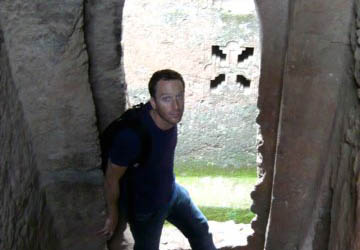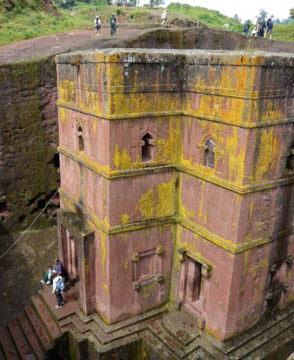
Dark tunnels and crumbling passageways, all
carved out of solid volcanic rock.
It must have come as a surprise to European missionaries arriving on the Dark Continent, eager and ready to convert heathen savages, only to discover that Ethiopia was the second country to adopt Christianity as a state religion, as early as the 4th century.


